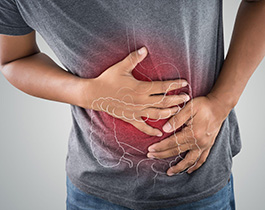#HEALTH: Common but painful
REPETITIVE movements common in daily life, such as using a computer keyboard and mouse, scrolling our phone screens, occupational use of vibrating tools or even housework can contribute to hidden health risks.
These activities can lead to carpal tunnel syndrome, which affects anyone, regardless of age. It's important to tackle its root cause so we can be more aware of the impact of these seemingly innocent daily activities.
The condition occurs when the median nerve, located in the carpal tunnel (a narrow passageway running from the forearm to the palm of the hand) becomes compressed.
Common symptoms include weakness when gripping objects, along with pain, numbness, or tingling sensations. While there are several contributing factors, it is often triggered by repetitive movements we regularly perform with our hands.
Sunway Medical Centre Velocity (SMCV) consultant orthopaedic trauma and sports surgeon Dr Raymond Yeak Dieu Kiat says joint or bone diseases, hormonal or metabolic changes and fluctuations in blood sugar levels can also contribute to carpal tunnel syndrome.
Inflammatory arthritis, for example, can cause the protective sheath around multiple tendons in the wrist's carpal tunnel to thicken, which reduces the already limited space in the carpal tunnel and puts pressure on the median nerve.
"Moreover, diabetes can cause neuropathy, which means even a slight narrowing of the carpal tunnel can significantly impact diabetic patients, leading to symptomatic carpal tunnel syndrome," says Dr Yeak.

Repetitive movements in daily life can lead to the development of carpal tunnel syndrome.
While individuals who have experienced wrist injuries, sprains, dislocations, or inflammation are more prone to developing carpal tunnel syndrome, the condition tends to affect women more than men.
SMCV consultant orthopaedic, trauma and paediatric orthopaedic surgeon, Dr Maria Shelynn Wong, says while four per cent of adults in the general population are affected by carpal tunnel syndrome, the prevalence among pregnant women is estimated to be between 31 and 62 per cent.
During pregnancy, expectant mothers experience a doubling of blood volume. The additional fluid increases pressure, leading to swelling in the blood vessels throughout the body.
Consequently, in confined areas like the carpal tunnel of the wrist, this swelling can compress the median nerve and potentially result in carpal tunnel syndrome, explains Dr Wong.
Fortunately, after giving birth, these symptoms typically subside as fluid levels return to normal and pressure on the blood vessels decreases.
Nonetheless, it is advisable for pregnant women to consult a doctor if they experience carpal tunnel-like symptoms.

Dr Wong says while four per cent of adults in the general population are affected by carpal tunnel syndrome, the prevalence among pregnant women is 31-62 per cent.
TRIGGER FINGER
Individuals who experience carpal tunnel syndrome may face another prevalent non-traumatic disorder known as trigger finger.
Dr Wong describes it as a clicking or catching sensation when opening and closing the fingers, which can be uncomfortable.
One of the main causes of trigger finger is repetitive actions such as twisting, squeezing, grasping, or forceful hand activities.
Additionally, medical conditions such as diabetes and rheumatoid arthritis can contribute to its development.
Similar to carpal tunnel syndrome, pregnant women are also vulnerable to trigger finger due to fluid retention and swelling during pregnancy.
Trigger finger is more commonly observed in older individuals and is rare in children. Apart from the elderly, housewives are also likely to experience trigger finger. The repetitive gripping and grasping of kitchen utensils and cleaning tools could contribute to this condition, as do activities like sewing, knitting, and hand-washing clothes.
Individuals with jobs or hobbies that involve repetitive hand work, typing-intensive tasks, or prolonged gripping are also at high risk of developing trigger finger.
DON'T STRAIN
To prevent carpal tunnel syndrome and trigger finger, Dr Yeak suggests reducing unnecessary repetitive hand motions, such as the leisurely use of mobile phones, or taking breaks to rest.
Gentle stretching exercises during resting periods can decrease stiffness and improve the affected area's range of motion.
Treatment options are tailored to each individual and include splinting — the use of a neutral wrist splint with a metal bar that restricts wrist movement while allowing finger movement — and physiotherapy, which may involve exercises to improve wrist and finger range of motion and strengthen the affected area.
Lastly, medication can be considered. Pain relief injections containing a combination of steroids and a local anaesthetic injected around the median nerve may benefit some patients.
However, Dr Yeak says prescribing steroids during pregnancy is generally avoided to prevent potential side effects.

Suggest to Read









